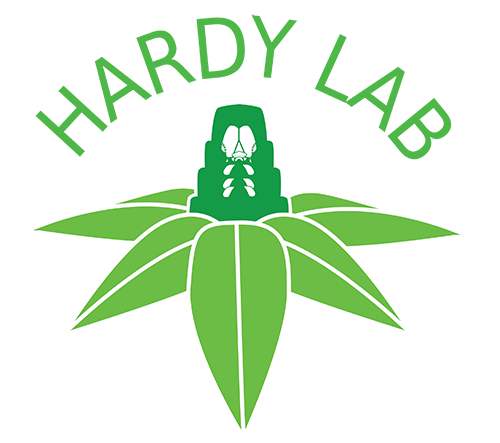Valid Names Results
Platylecanium vanda Hodgson, 2025 (Coccidae: Platylecanium)Nomenclatural History
- Platylecanium vanda Hodgson 2025a: 185. Type data: THAILAND: Bankok, intercepted at S.F., on Vanda coerulea, 4/19/1948,. Holotype, female, by original designation Type depository: Washington: United States National Entomological Collection, U.S. National Museum of Natural History, District of Columbia, USA; accepted valid name Notes: holotype / paratype ad ♀♀ (3 young adf, plus 2 x second-instar ♀ nymphs: holotype: right-hand specimen, marked with a black line, furthest from label; other specimens here designated paratypes, good) (USNM). Illustr.
Common Names
Ecological Associates
Hosts:
Families: 1 | Genera: 3
- Orchidaceae
- Ascocentrum | Hodgso2025a
- Orchidaceae | Hodgso2025a
- Vanda coerulea | Hodgso2025a
Geographic Distribution
Countries: 1
- Thailand | Hodgso2025a
Keys
Remarks
- Systematics: Platylecanium vanda is morphologically very similar to P. nepalense but is much smaller when mature and occurs on different hosts. (Hodgson, 2025)
- Structure: Slide-mounted adult female body oval and symmetrical, quite broad and rounded at both ends, length 2.0‒4.3 mm, width 1.5‒3.3 mm; anal cleft about 1/7th of body length. Platylecanium vanda can be recognized by the following combination of character-states:(i) broadly oval shape; (ii) anal plates longer than wide, with posterior margin longer than anterior margin and with a rather pointed apex; (iii) underside of each anal plate showing nothing distinctive; (iv) margin not crenulated; (v) dorsal setae with a blunt apex and a large basal socket; (vi) marginal setae slightly longer than dorsal setae but with a narrower basal socket, each seta with a blunt apex; (vii) marginal setae very few, with only 0 or 1 associated with each marginal reticulation point and with only about 10‒15 per side; (viii) preopercular pores easily separable from dorsal simple pores; (ix) each stigmatic cleft with 4‒7 long, narrow stigmatic spines; (x) multilocular disc-pores restricted to abdominal segments VII and VI; (xi) legs normally absent, and (xii) antennae with a short scape, other segments fused. (Hodgson, 2025)
- General Remarks: Detailed description of adult female, second instar female and second instar male and illustration of adult female and second instar and male and female in Hodgson, 2025.
Illustrations
Citations
- Hodgso2025a: description, diagnosis, distribution, host, illustration, taxonomy, 188-191


